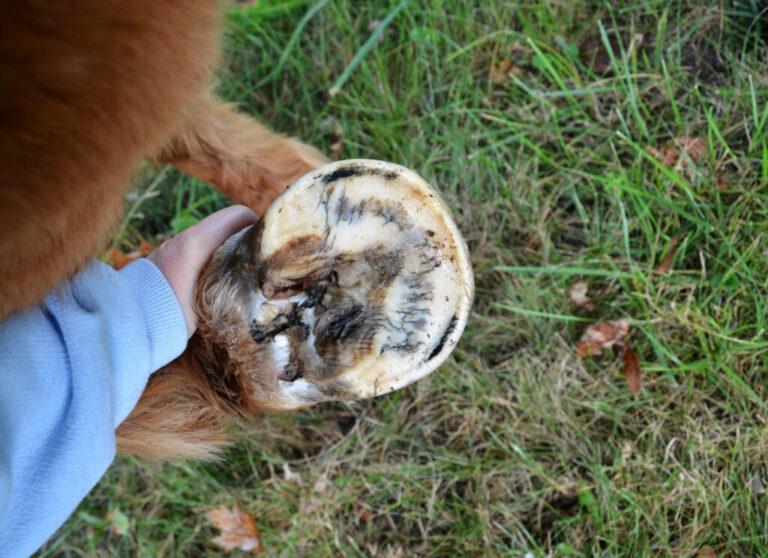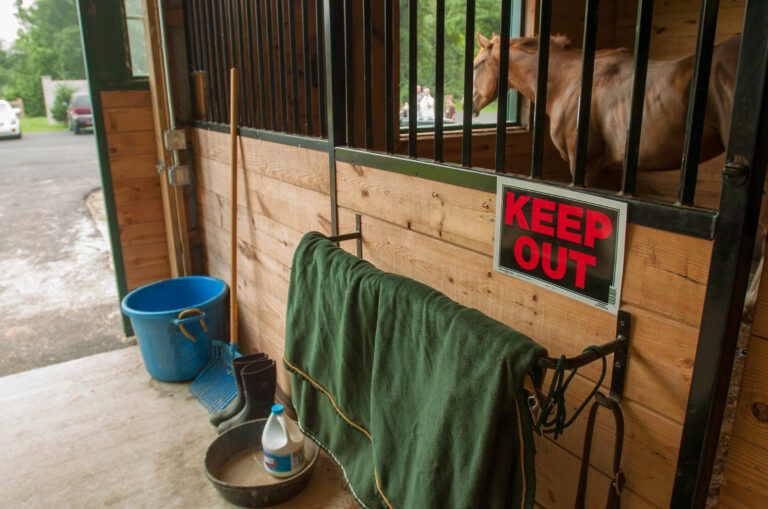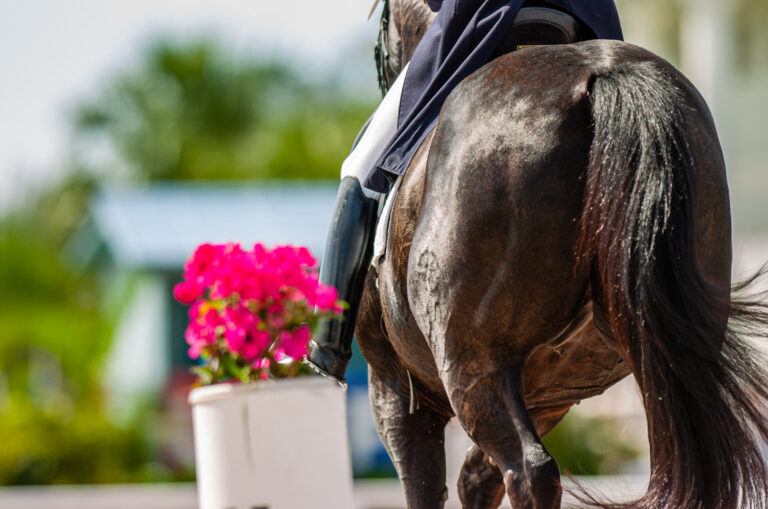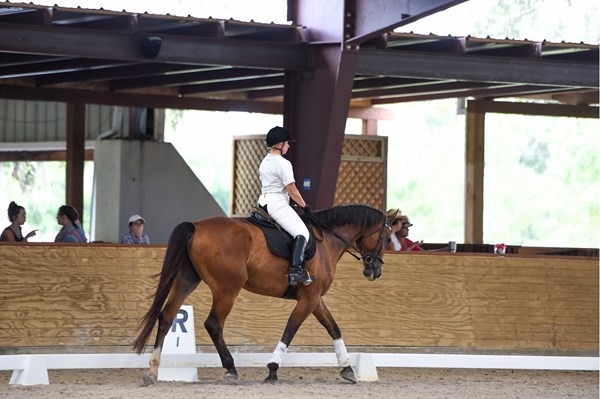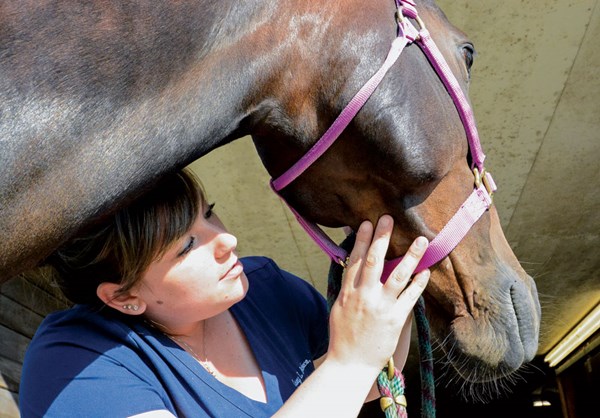One of the ways you can help your horse recover from a strenuous workout, such as a gallop or jump school, is to apply a liniment, brace or cooling gel to his legs and/or any large muscles that might be sore. This helps promote circulation which, in turn, reduces swelling in tendons, ligaments, muscles and other soft tissues.
You can do this periodically to address temporary swelling resulting from extreme exertion or on a daily basis for more chronic swelling, such as windpuffs or stocking-up. Because they often visibly reduce swelling, these products are also sometimes referred to as leg “tighteners.” When used in conjunction with massage—for example, over the back and haunches—these products can also help to relax and relieve minor discomfort in your horse’s muscles. They can also be used as a brace where you dilute the liniment in a bucket of water. You then apply the brace as a final rinse after bathing your horse to promote circulation over his entire body.
What to Use
There’s a wide variety of liniments, braces and cooling gels on the market with many different ingredients. Read product labels carefully—both for the ingredients and instructions on how to use them. Some products are stronger than others—and some are too caustic for horses with sensitive skin, causing irritation and sometimes even blistering and hair loss. Unfortunately, the best way to determine what products are best for each specific horse is through trial and error. I recommend trying any new product on a small area of your horse’s belly in a place that isn’t obvious and won’t come in contact with your leg or any tack or equipment. Apply enough to the test spot to penetrate through the coat to the skin, then check it periodically over the next 24 hours or so to observe any reaction (skin redness, hair loss, etc.).
If you plan on bandaging your horse after applying liniment, again, read the product label carefully. Some products can cause blistering if used under bandages, and the labels should indicate if that is a risk.
What product(s) you choose may also depend on your budget. Gels tend to be less wasteful and easier to apply than liquids. However, two of the most affordable liniments are household liquids: rubbing alcohol and witch hazel. The former dries out the skin much more rapidly than the latter so shouldn’t be used on a daily basis. If you decide to go with a liquid, pouring it into a spray bottle makes application much simpler and more cost-efficient.
Check Competition Rules
If you’re competing, check with your veterinarian to be sure all of the ingredients in the product you choose—including “natural” ones—are legal under your discipline’s drug rules. If they aren’t, find out how much time you must allow between when you use the product and the beginning of the competition. To learn more about the USEF Drugs and Medication Program, go to www.usef.org/compete/resources-forms/rules-regulations/drugs-medications. The FEI also has a searchable prohibited substances database: http://prohibitedsubstancesdatabase.feicleansport.org/search/.
At home, I generally apply liniment within about an hour of a horse’s workout, before turning him out or returning him to his stall. At competitions, I often bathe and hand-graze horses before icing their legs and then applying liniment and bandaging them.
How to Apply
Use a spray bottle to apply liquid liniments, such as witch hazel. Unless you enjoy the tingly feeling in your hands (some people do!), wear latex gloves to apply and massage in liniments and gels.
- For routine leg care, concentrate your efforts primarily on the major tendons and ligaments between the knee and fetlock on each front leg and …
- … between the hock and fetlock on each hind leg. (Applying liniment to areas above and below this region is fine, too, especially if your horse has experienced sore pasterns, knees, hocks, etc.)
- If you’re using a liquid, spray it over the entire area of concern, catching the drips with your other hand.
- You’ll need enough liniment or gel to work down through the hair to the skin. This will depend on how thick your horse’s coat is. (If his legs have recently been clipped, you won’t need as much.)
- Rub the liniment into each leg for at least 20 seconds, using up-and-down and side-to-side motions with both hands.
- Continue massaging it with your fingers into the skin beneath the sesamoid bones (the bones in the fetlock).
- To massage large muscle masses, again apply enough liniment or gel to penetrate the coat and reach the skin.
- Then, firmly stroke the length of the muscle repetitively with one or both hands. Keep an eye on your horse’s facial expressions to gauge how much pressure he seems to enjoy/tolerate.
- Alternatively, apply gentle compressions with your hands or a kneading action with your fingers, as if you were kneading bread. Continue one technique or a variety of techniques until the muscles soften, yielding to your hand pressure in a more supple, pliable way.









About Emma Ford
Emma Ford grew up in North Devon, England, riding in the Pony Club and in the hunt field with her father, who was a Master of Foxhounds. She jumped in Great Britain’s famous Horse of the Year Show in 1991 before moving to the U.S. to groom professionally for four-star eventer Adrienne Iorio.
For 16 years, Ford managed Phillip Dutton’s True Prospect Farm in West Grove, Pennsylvania, and groomed at multiple Olympics, World Equestrian Games and Pan American Games. She was named the 2007 U.S. Eventing Association’s Professional Groom of the Year and awarded the 2012 Professional Riders Organization Liz Cochran Memorial Groom’s Award.
Ford currently is the manager of Twin Pond Farms Rehabilitation Center in Cochranville, Pennsylvania. She also operates her horsemanship and health-management clinic business, World Class Grooming, along with business partner Cat Hill. The two co-authored a book of the same name. For more information, go to worldclassgrooming.com.
This article originally appeared in the Summer 2022 issue of Practical Horseman.


